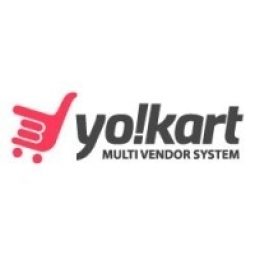Technology Category
- Platform as a Service (PaaS) - Application Development Platforms
Applicable Functions
- Procurement
Use Cases
- Inventory Management
About The Customer
Bozinga is an American online B2B wholesale marketplace based in Bogota, Columbia. The platform connects manufacturers, distributors, and service providers from the Americas to customers from all over the world. Businesses can procure products directly from wholesalers or contract services from service providers on this secure platform. Bozinga caters to more than 520 categories and subcategories of products and serves over 190 countries and markets worldwide. The company envisioned a pan-American B2B eCommerce multi-vendor marketplace that would provide a platform for manufacturers, distributors, service providers, and trading companies to conduct B2B trade in a cohesive online ecosystem.
The Challenge
Bozinga, an American online B2B wholesale marketplace, aimed to create a pan-American B2B eCommerce multi-vendor marketplace. The platform was envisioned to connect manufacturers, distributors, service providers, and trading companies, facilitating B2B trade in a cohesive online ecosystem. The company wanted to create a secure platform that would ease and efficiencize online business transactions. A key requirement was an RFQ module that would enable offers and counter-offers to facilitate negotiations. Upon mutual acceptance, bulk orders needed to be processed in accord with the buyer’s requirements. The challenge was to customize a solution that would meet these specific needs and align with the shared business goals.
The Solution
FATbit offered Bozinga a comprehensively customized Yo!Kart marketplace solution with result-driven B2B functionalities. The platform was designed to meet core B2B eCommerce requirements of effective negotiations, bulk selling, availability of services, and direct communication channels. Key features delivered included an RFQ/Order Negotiation Module, Bulk Order Management, Filtering & Search Navigation, Security and Authenticity, Minimum Order Quantity, Individual Seller Storefront, Real-time Inventory Updates, and Streamlined Payment Collection. The platform was also designed to host a multitude of sellers, including manufacturers, distributors, service providers, and traders. An advanced search solution was embedded to allow buyers to search products based on seller types, easing the process of identifying products that match their requirements.
Operational Impact
Quantitative Benefit

Case Study missing?
Start adding your own!
Register with your work email and create a new case study profile for your business.
Related Case Studies.

Case Study
Hospital Inventory Management
The hospital supply chain team is responsible for ensuring that the right medical supplies are readily available to clinicians when and where needed, and to do so in the most efficient manner possible. However, many of the systems and processes in use at the cancer center for supply chain management were not best suited to support these goals. Barcoding technology, a commonly used method for inventory management of medical supplies, is labor intensive, time consuming, does not provide real-time visibility into inventory levels and can be prone to error. Consequently, the lack of accurate and real-time visibility into inventory levels across multiple supply rooms in multiple hospital facilities creates additional inefficiency in the system causing over-ordering, hoarding, and wasted supplies. Other sources of waste and cost were also identified as candidates for improvement. Existing systems and processes did not provide adequate security for high-cost inventory within the hospital, which was another driver of cost. A lack of visibility into expiration dates for supplies resulted in supplies being wasted due to past expiry dates. Storage of supplies was also a key consideration given the location of the cancer center’s facilities in a dense urban setting, where space is always at a premium. In order to address the challenges outlined above, the hospital sought a solution that would provide real-time inventory information with high levels of accuracy, reduce the level of manual effort required and enable data driven decision making to ensure that the right supplies were readily available to clinicians in the right location at the right time.

Case Study
Hardware Retailer Uses Data Warehouse to Track Inventory
Ace tracked which products retailers ordered, when they were ordered and shipped. However, the company could not track or forecast actual sales. Data used for reporting was up to a one-week old, owing to performance and data cleansing issues. Requirement to integrate wholesale and inventory data with POS data to help drive key business decisions, improve category management, lower inventory costs and optimize pricing. Reliance on custom coding to integrate POS data was excessively resource intensive and led to major performance constraints.

Case Study
Remake Enterprise-to-production System
The client was running a legacy material flow tracking system and wanted to replace the system with a more effective one as the system was increasingly expensive to maintain and support and also was not extendable. The client's IT landscape was filled with modern applications and it was difficult to interface the material flow tracking system with modern applications.

Case Study
Expertech - Capital Tool Inventory
Costly tools used to splice fiber optic cables are an important part of Expertech’s operational and capitalized expenses, but the company did not have an automated system in place to track their tools and optimize their usage. The existing data in its tracking system was inaccurate and required manual updating, making it essential for the company to implement an efficient process to track and follow up on its capital tool inventory.









